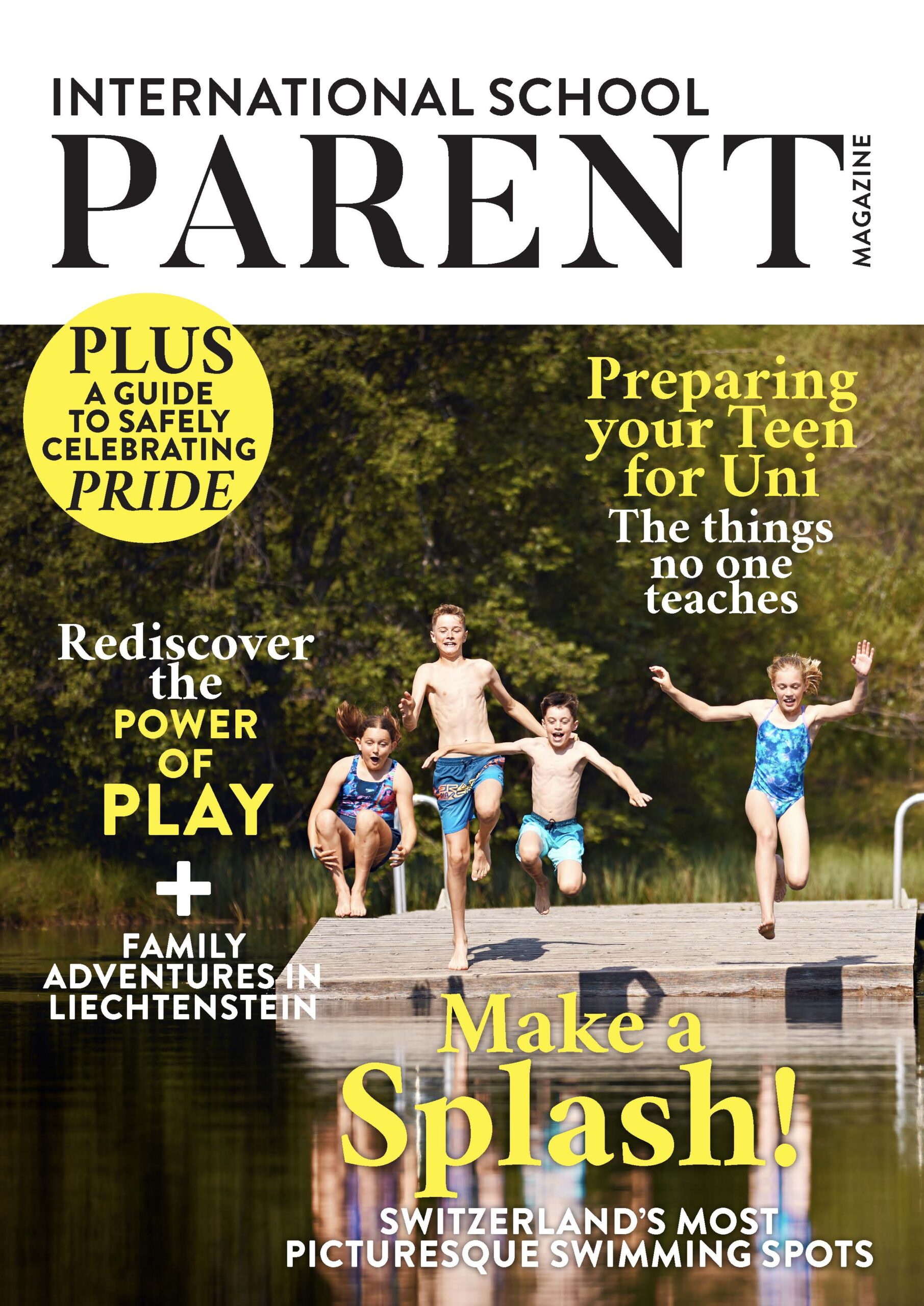AI and ChatGPT in the Classroom

The real question is not whether machines think but whether men do.
B.F Skinner.
By Cian Taylor and Ioannes Giannakopoulos – John F. Kenney International School
Great skepticism on AI abounds, and many see it as a threat. Already, studies in universities are finding how technology may be disruptive in ways not intended: respondents note a rise in student plagiarism, cheating and distractibility, which they attribute to easy and ready access to mobile technologies. We are at a junction in time where the scholarly world and its attempts to curb plagiarism are not keeping up with the rapidly improving technology of the time. Therefore, should schools simply ban the use of AI tools, and trust that the students will work independently?
Changing Times
Marshall Mcluhan witnessed a contrast and a divide in education and technology, even as far back as the 1960s. He was observing that schools simply were not keeping up with rapidly growing technological mediums for educational purposes, and that traditional teaching methods could not coexist with new technologies, and therefore had to limit student access to mediums, as opposed to encouraging them to utilize all tools available to them in order to emerge with full understanding into a rapidly changing world. Technology has continued its rapid advancements, and now schools are far behind.
American Political Scientist Simon A. Herbert famously commented on the changing world of information: ‘In an information-rich world, the wealth of information means a death of something else: a scarcity of whatever it is that information consumes’. The multitude of new mediums that now exist for any student with internet access to engage with, what information consumes is rather obvious: it consumes the attention of its recipients. Hence a wealth of information creates a poverty of attention. Students must understand the cost of information to properly develop their own learning strategies.
ChatGPT in the classroom: revolutionising education or an imminent threat to the learning process?
In recent years, the integration of artificial intelligence (AI) models like ChatGPT in educational settings has gained significant attention. ChatGPT, based on the GPT-3.5 architecture developed by OpenAI, has the potential to enhance classroom interactions and revolutionise education. However, it is crucial to recognise and address the potential dangers associated with its usage. This article explores the benefits of incorporating ChatGPT in the classroom while highlighting the need for caution and understanding the potential risks involved.

Enhanced Learning Experience
One of the main advantages of using ChatGPT in the classroom is the potential for an enhanced learning experience. Students can engage in interactive conversations with ChatGPT, ask questions, and receive immediate responses, fostering a deeper understanding of the subject matter. ChatGPT can also provide personalised feedback and explanations, catering to individual students’ needs and promoting self-directed learning. These benefits have the potential to improve academic performance and make learning more engaging and accessible.
Ethical Concerns and Bias
As with any AI model, ChatGPT presents ethical concerns and risks of bias. The language model learns from vast amounts of data, including text from the internet, which can introduce biases present in the training data. This bias can perpetuate stereotypes, reinforce discrimination, or present inaccurate information. Educators must be vigilant and critically evaluate the responses generated by ChatGPT to ensure accuracy, fairness, and inclusivity. Proper oversight and continuous monitoring are essential to mitigate the risks of biased or harmful content being propagated in the classroom.
“Though it may be preferable to ignore it, AI tools have found their way into classrooms, whether teachers are willing to accept it or not.”
Privacy and Data Security
The usage of ChatGPT in the classroom raises concerns regarding privacy and data security. AI models like ChatGPT require students’ interactions to generate responses, which means that user data, including personal information and conversations, are stored and processed. Educational institutions must prioritise data privacy, ensuring that students’ data is protected, securely stored, and used solely for educational purposes. Transparent policies and explicit consent mechanisms should be in place to safeguard student privacy and prevent the misuse of their personal information.
Limited Human Interaction
While ChatGPT can enhance classroom interactions, it also presents the risk of reducing the importance of human interaction. Education is not solely about acquiring knowledge but also about developing social skills, emotional intelligence, and collaborative abilities. Relying too heavily on AI models like ChatGPT may hinder the development of these essential skills. It is crucial to strike a balance between utilising AI as a tool and maintaining human connections, ensuring that students have ample opportunities for face-to-face interactions and discussions.
Unreliable or Incomplete Information
Another significant concern with ChatGPT is the potential for providing unreliable or incomplete information. AI models like ChatGPT do not possess real-time knowledge or the ability to fact-check information. Consequently, there is a risk of students receiving incorrect or misleading answers, which could lead to confusion or the reinforcement of misconceptions. Educators must encourage critical thinking and provide students with the necessary tools to evaluate and verify information independently, complementing the usage of ChatGPT as a supplementary resource rather than a primary source of information.
The New Normal
ChatGPT has the potential to transform the classroom by offering enhanced learning experiences, personalised feedback, and increased accessibility. However, educators and educational institutions must be cautious of the potential dangers associated with its usage. Ethical concerns, bias, privacy, limited human interaction, and unreliable information are critical issues that need to be addressed. By acknowledging these risks and implementing appropriate safeguards, educators can harness the benefits of ChatGPT while mitigating its potential dangers, creating a balanced and effective learning environment for students.
Though it may be preferable to ignore it, AI tools have found their way into classrooms, whether teachers are willing to accept it or not. We believe that instead of ignoring the issue, or banning the use of AI, proper education on its risks and benefits must be undertaken, and students should make their own conclusions on how much they can rely on AI tools for their work.
More than ever students must be tempted to actually desire for their own benefit to learn, as if a student can have an essay written for them by AI, then corrected to have perfect spelling and grammar, and submit it with no effort, then what is to stop them?
We believe it is critical that the students themselves reach the conclusion that, while the internet may have all the answers one would ever need to effectively formulate answers for almost any prompt a Middle School teacher may give them, they should still form their own conclusions on the work. If a teacher can effectively motivate a student to learn on their own, then they will develop far more than a student who learns only what they are told to learn.
Conclusion
Adapting to these changing times is a difficult process, that will not happen overnight. However, we believe that with modern technology must come a more modern approach than simply limited the usage of the AI tool. For two classes of a total of 25 students (ages 13-14), I gave them the task of creating a short presentation, and I said that they could use any tools they wanted – The aim was to show how quickly a presentation could be prepared using AI, so that they could then revise the information in order to show understanding.
However, one class agreed that I was ‘cheating’, and not a single one used ChatGPT at any point. In another class, one student used it, but failed to do any follow up research, and did not effectively present the information on the screen. These small pockets of analysis are part of a greater discussion of AI in our school, where students are encouraged to ask questions, and talking about or using ChatGPT is not taboo.
Therefore, through concentrated discussion, we believe the students can come to their own conclusions on the benefits and potential risks of using AI for their schoolwork.
